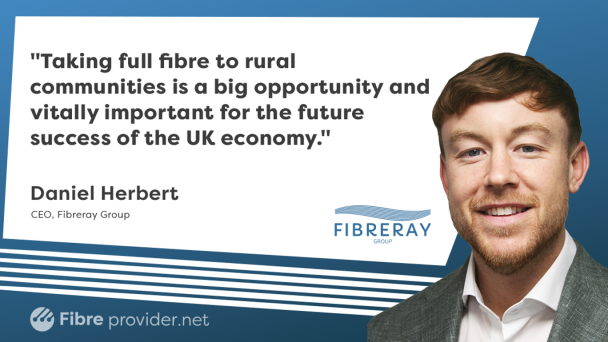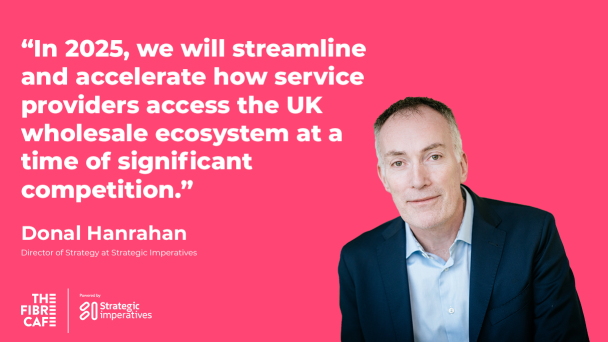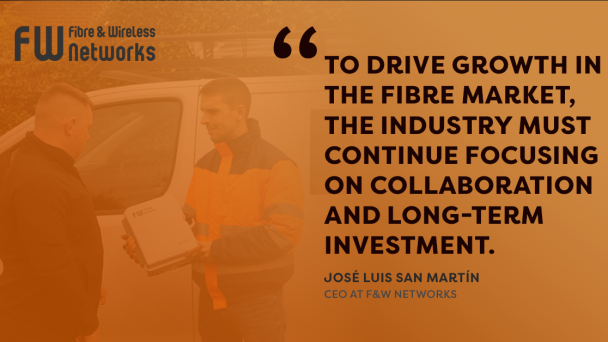Access is critical to empowering service provider success, according to Donal Hanrahan, Director of Strategy at Strategic Imperatives. Here he discusses his plans and priorities to ensure The Fibre Café, its cloud based, API-driven integration platform, continues to catalyse competition and drive positive outcomes.

Fibreray's rural rollout campaign received a boost following its August acquisition of RunFibre in a deal that also accelerates the Cornwall-based altnet's wholesale ambitions, according to CEO Daniel Herbert. Here, he explains how Fibreray’s design-then-build approach will increase the altnet’s efficiency and help it leverage the “almost unlimited” opportunities present in this space.
“All too often in the altnet market, we have seen businesses setting out with the aim of providing fibre connectivity, but with little of their own design capability,” he said. “Fibreray Group has started out with a design-then-build approach, and it was only natural to then have the network operation function in-house as well, hence this recent acquisition.”
“Being within the same group as RunFibre means that we can build to our own design and that all the decision-making can be undertaken quickly and efficiently. We can go from design through to ready-for-service within a very short period, much faster than you’d see with other altnets.”
RunFibre is already established in South Gloucestershire and North Wiltshire, having utilised BDUK Vouchers to extend rural connectivity up to a Gigabit to over 1,500 premises.
The group has now begun further expansion into areas in the region that currently have a limited-service offering. Its goal is to deliver high-speed fibre connectivity to underserved rural and semi-rural areas across the UK and thus play its part in getting Britain fully connected by 2030.
Herbert said: “We will utilise the government subsidies as much as possible, as within the rural space this is the best method for delivering the service. The opportunities here are almost unlimited at the present time.”
RunFibre has a pipeline of pre-registered packages (PRPs) to build on and is looking to secure additional build projects and areas. Where there is no voucher funding available, to undertake commercial builds that will deliver full fibre into rural communities.
“Our approach is to focus on what we can control,” added Herbert. “We will take full advantage of any government subsidies that are available. Where there are none, we will find other ways to deliver full fibre services.”
Rural builds come with additional challenges of dealing with unique landscapes, but Herbert points to the Group’s unique model as a way to overcome this. He said: “Taking advantage of Fibreray’s efficient design and build process will allow Runfibre to reduce the time from feasibility studies to customer delivery and with direct access to the design and build team, provide enhanced adaptability and customer service.”
After expanding to offer good coverage and deliver a solid reliable service to rural areas, Fibreray’s long-term goal is to build up a wholesale arm that can provide connections to other companies, allowing them to offer their own customers a strong reliable service over its network.
In time, it also aims to offer connections over other networks. “Underpinning all of that, we want to create a brand that is known for delivering excellent service,” adds Herbert.
To this aim, Fibreray Group has not ruled out further acquisitions and according to Herbert, the organisation has already been speaking to some parties about potential deals.
He said: “We would also look at any potential to merge our operations with other like-minded businesses. As an organisation, we want to try and keep the passion going; that can easily be lost when M&A occurs, and we’ll be mindful of that when speaking with potential partner companies.
“We will always want to try and retain the key people and to keep their passion and their intimate knowledge of the communities they serve.”
The M&A roadmap seems clear for altnet M&A across UK cities and market towns with commentators agreeing that the firing gun has sounded, and the pack will dwindle to two or three major players within the coming years.
In rural regions, this picture has been harder to predict, with some suggesting that one rural champion brand will remain and others seeing a series of regional champions who are deeply embedded into their communities.
Herbert states that the most important thing to remember is that future forecasting does not get in the way of finishing the job and bridging the digital divide.
He said: “It’s difficult to say how exactly the landscape will change, but you can be certain that it will change. Taking full fibre to rural communities is a big opportunity and vitally important for the future success of the UK economy.
“The quickest way to diminish the digital divide is to make full fibre available to everyone, in all communities.”




